Forster’s Terns
Ah…. Spring is in the air. Single men are polishing their sports cars, buying new tires for their “I got one too” BMW 3 series, and laying down some cash for a few new spring shirts, all in the hope of attracting a nice girl. Yeah, right… wrong bait for that. Want a sure fire way of snagging a mate? Try a plump fish.
That is how a romantically inspired Forster’s Tern will tell a hot, curvy female tern that he is worthy of her attention. He entices here with a nice, plump, slimy, fish.
Keep Trying Buddy
The wind was blowing and this horny er…. persistent male made many attempts to deliver this minnow to a squawking female. When she was alone as the male circled in the wind, she would squawk and squawk calling out that she was hungry and was willing, just maybe, to offer desert. Well if it was me, all that female squawking is one big red flag, but to a tern it was an irresistible siren’s call.
He finally delivered the minnow to her as he floated in the air, and what did the clumsy bird do? She dropped it!!! I caught it all the sequences above. Check out the last few pics in the series for the hand-off and the big fumble.
What I Did Right and What I Did Wrong
I had my Canon 5D Mk II in my standard setup. I spin my mode dial to C3 and my standard settings pop up with the camera ready to shoot. Since the light was setting but still good, I bumped my ISO down to 200 from my standard 400 to improve image quality. I think my 5D Mk II is not as good as most say when it comes to noise and I can see noise in the dark areas when I shoot ISO 400. On top of that, I knew these pics were going to require heavy cropping even with my Canon 500mm f/4 IS L lens, and when you crop, all kinds of nasty stuff caused by high ISOs start to become visible.
I then shot most of these at around f/5.6 which gave me a camera-calculated shutter speed of around 1/600 sec. This was very border line for freezing action and I worried that it may be too slow. So after I got a few good shots on the first few passes of the male tern, I bumped the ISO to a noisier 400 and that doubled my shutter speed to around 1/1200 sec which is good for freezing most motion.
The bad thing about these settings is the dangerously narrow depth of field (DOF) of a f/5.6 aperture. This means that if my focus was not spot on, I tried to focus on the female’s head, or the male was not perpendicular to me and therefore not in the focus plane, he would be blurred and the shots ruined.
In all, I am happy with my decisions but the male was not always perpendicular to me and the focus point on the female’s head and therefore slightly out of focus. These pictures could have been better. I chose f/5.6 because this wider, or more open, aperture setting gave me a fast shutter speed to freeze a moving subject. I could have improved my focus chances by increasing the depth of field by stopping the down the aperture a click or two to a higher f/stop number, but I would have lost valuable shutter speed which would then result in motion blur. It’s all about balance and frankly, a bit of gambling. Practice and experimenting are required to develop your judgement in these difficult situations. Medium to low light with a moving subject like this set up here is one of the most difficult situations for a photographer to assess.
Calculating Depth of Field (DOF) for 500mm – Focusing is Tough!!!
I occasionally use an app for my Android phone called “Depth of Field Calculator for Photographers” by Allan Zhong to better understand DOF. I won’t go into a big scientific analysis or explanation but just simply say that DOF differs by lens length, distance from your subject, your camera make and model, and then your aperture (f/stop). I shot these birds from around 40 to 50 feet away and my app calculated a DOF of just less than 12″. That’s right, you read that correctly, just a slim focus band of under 12″. Said another way, the only stuff in focus is 6″ behind, and 6″ in front of my focus point making it a surprise that anything came out acceptable from this shoot. Now I could have increased the DOF and improve the odds of better focus by stopping down the aperture, but then I lose shutter speed. Yes, this is one tough thing to wrestle with.
Denouement
I was excited and happy with these photos but they could have been better. In post processing using LightRoom 4, I used the brush to lighten the shadow-side of the terns somewhat and tweaked the white balance. For some reason, these pictures came out very blue so I had to modify the white balance. And as I noted above, I had to crop them down quite a bit.
So what happened with these two and the dropped minnow? The two terns dropped down behind the wooden seawall in pursuit of the slimy token and didn’t emerge for a few minutes. The female wasn’t squawking, and I swear that male was smiling.
The Equipment:
- Canon 5D Mk II
- Canon 500mm IS f/4
- Gitzo tripod with Wimberly head
- Horny birds

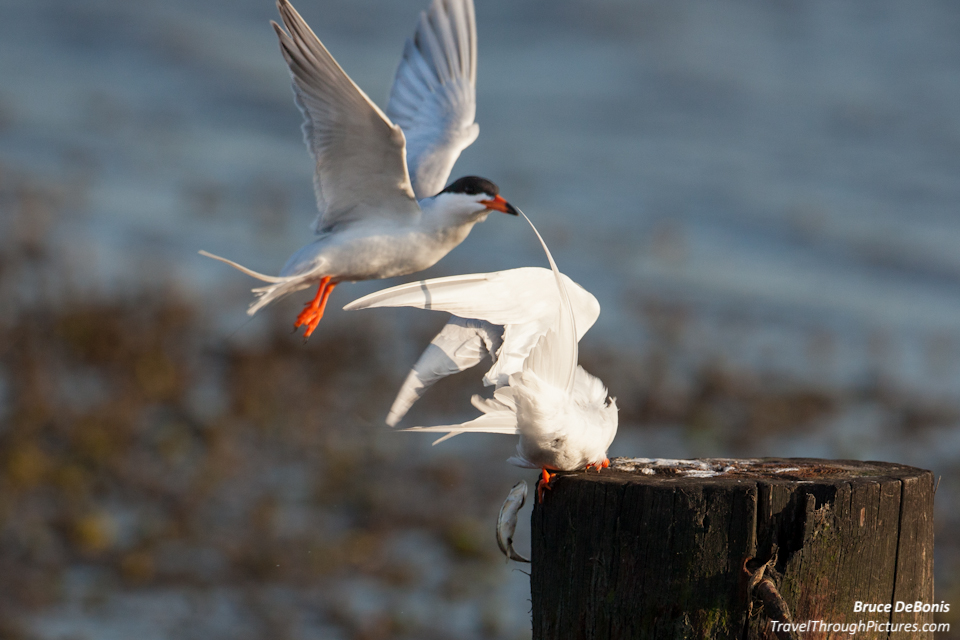
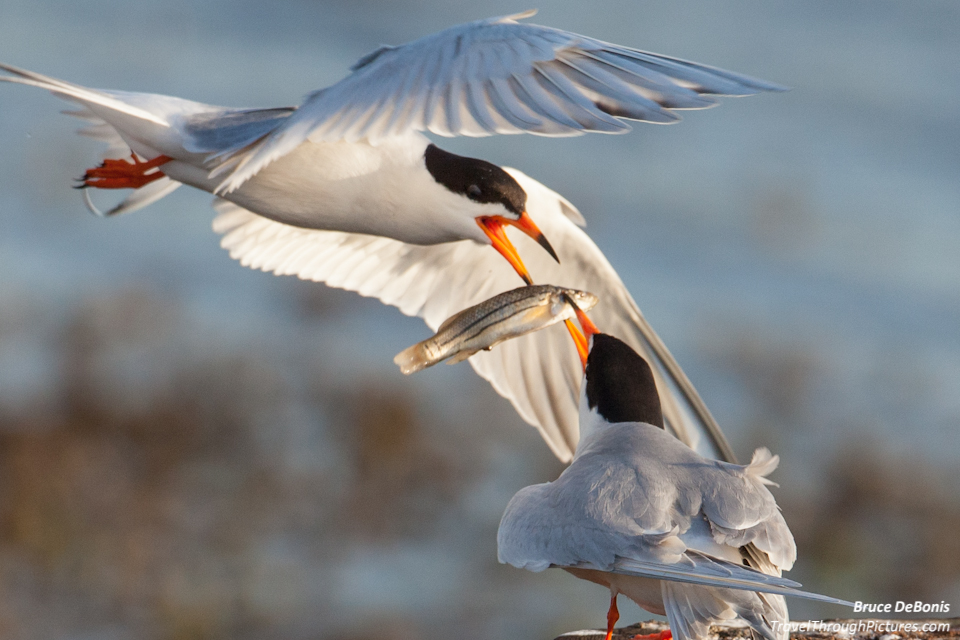
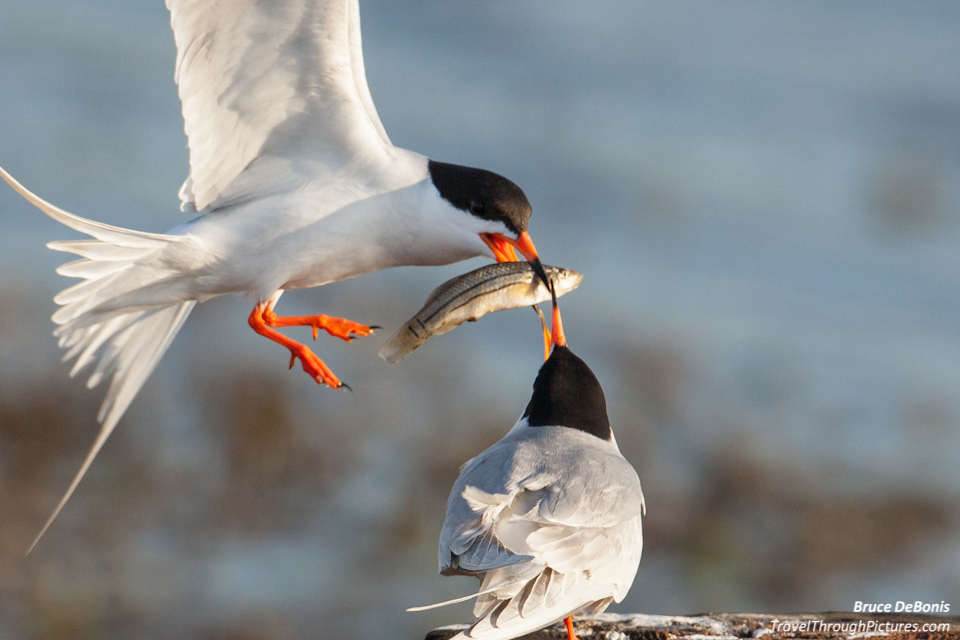

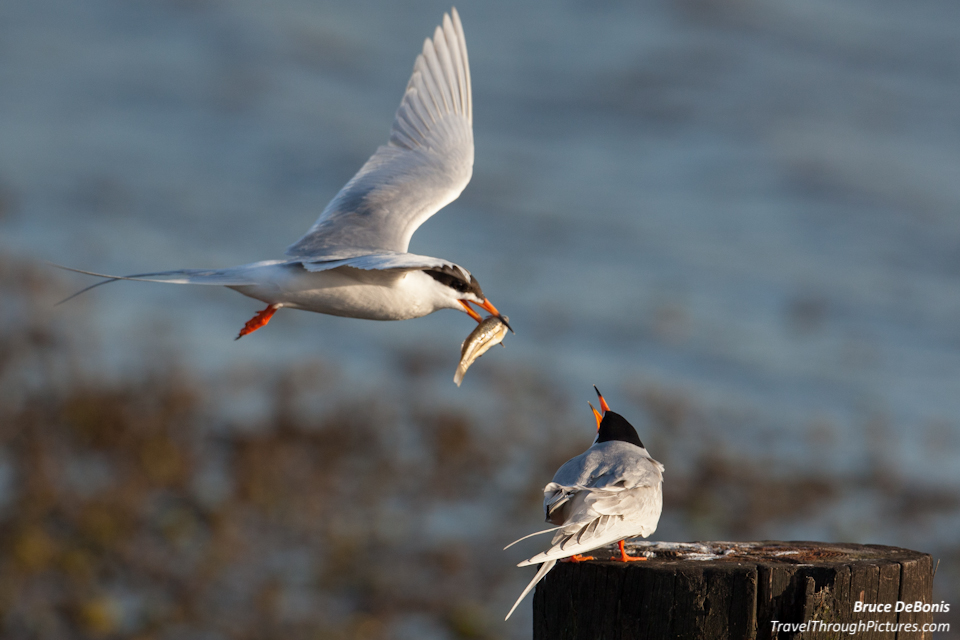
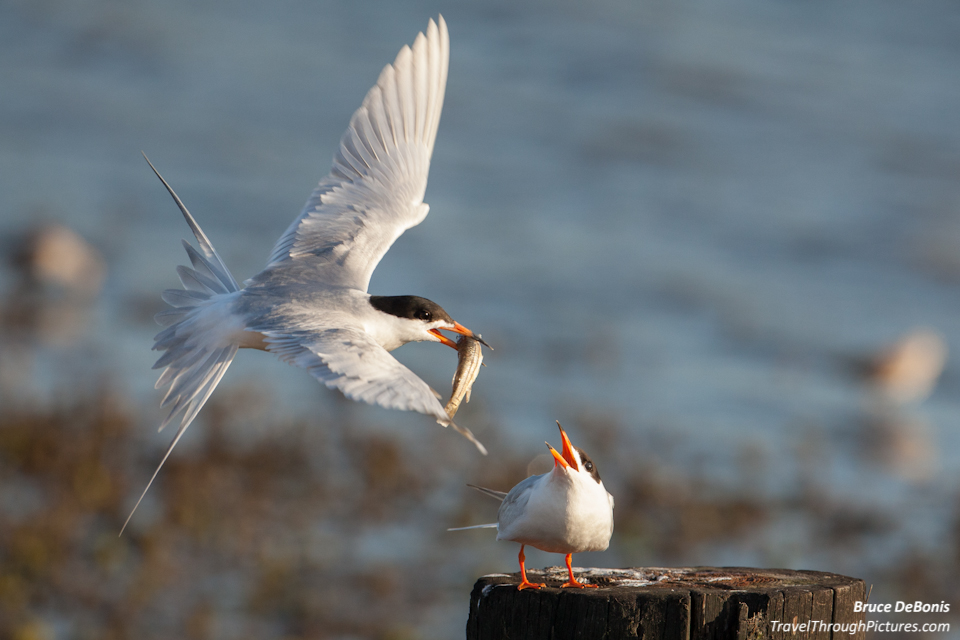
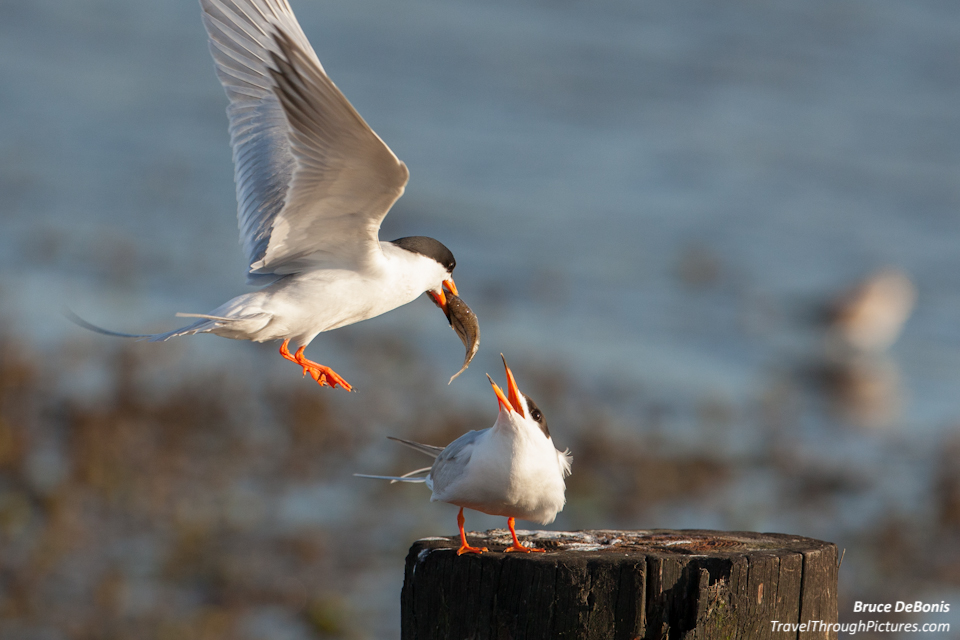
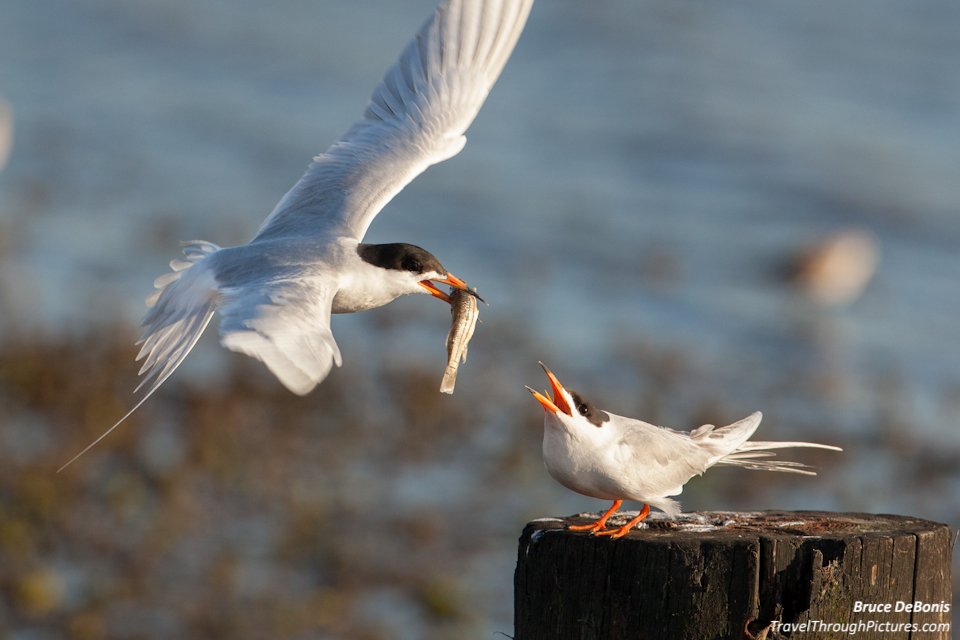
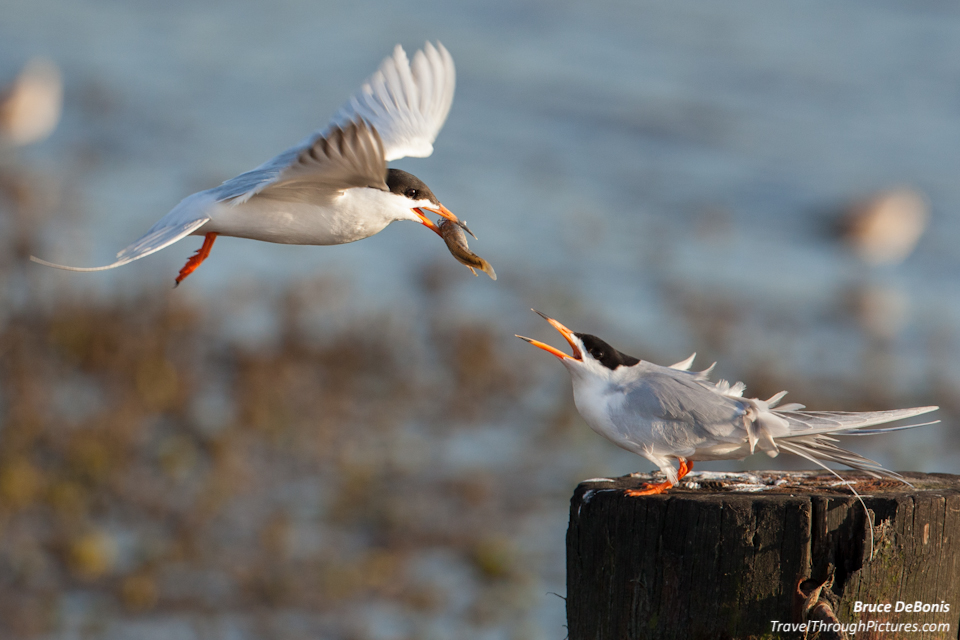
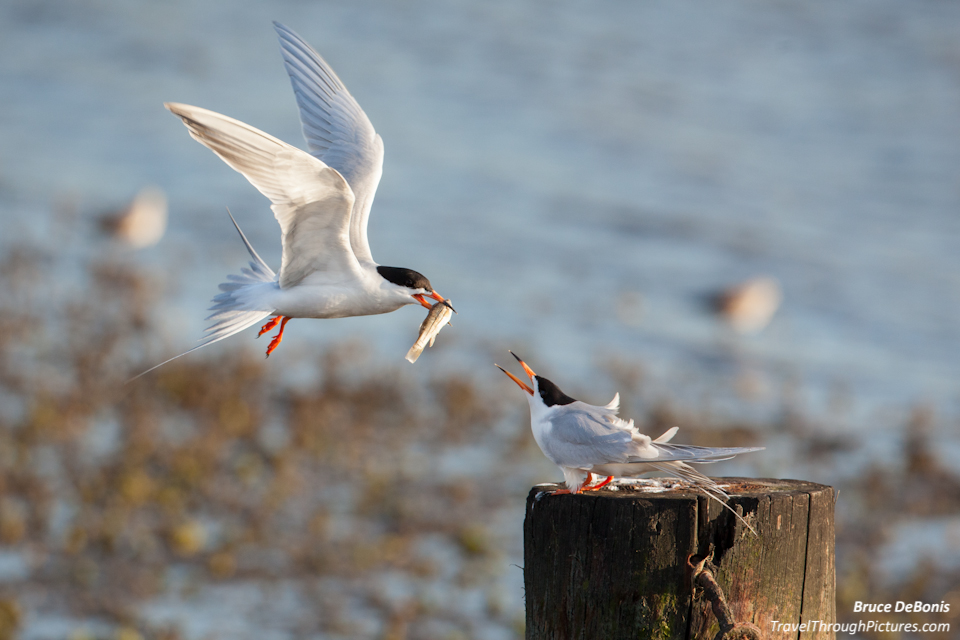
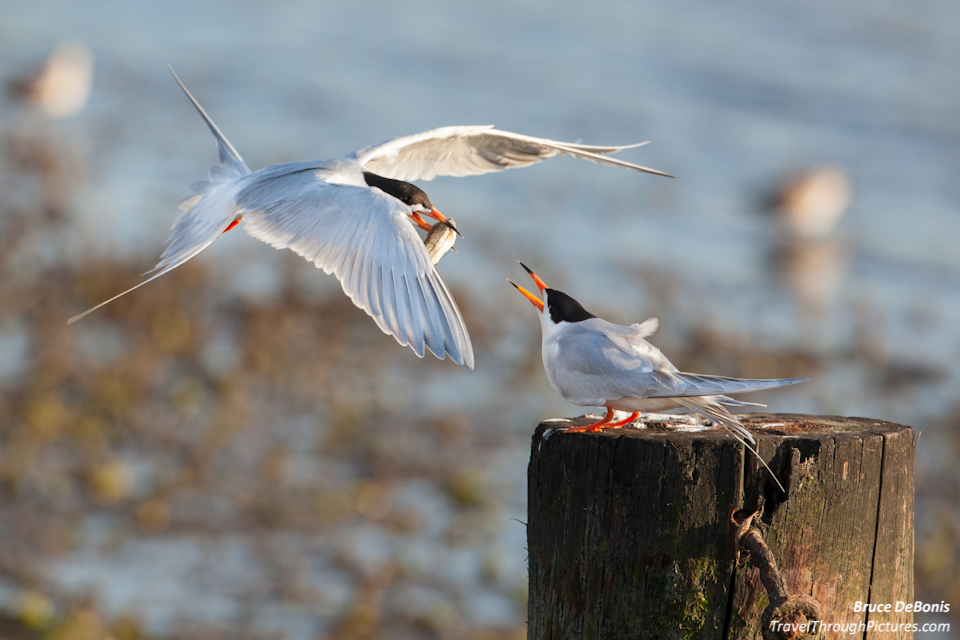

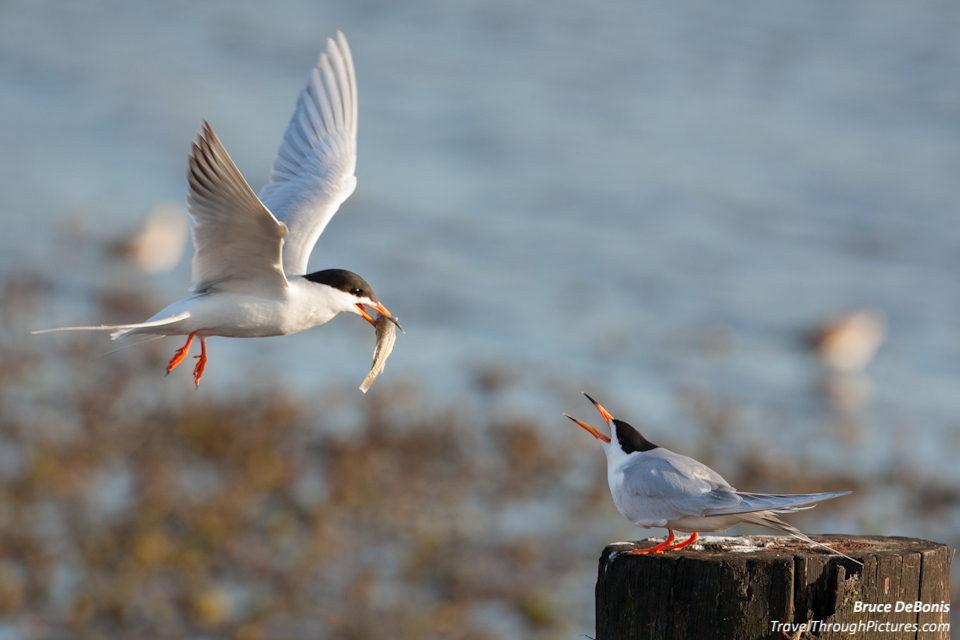
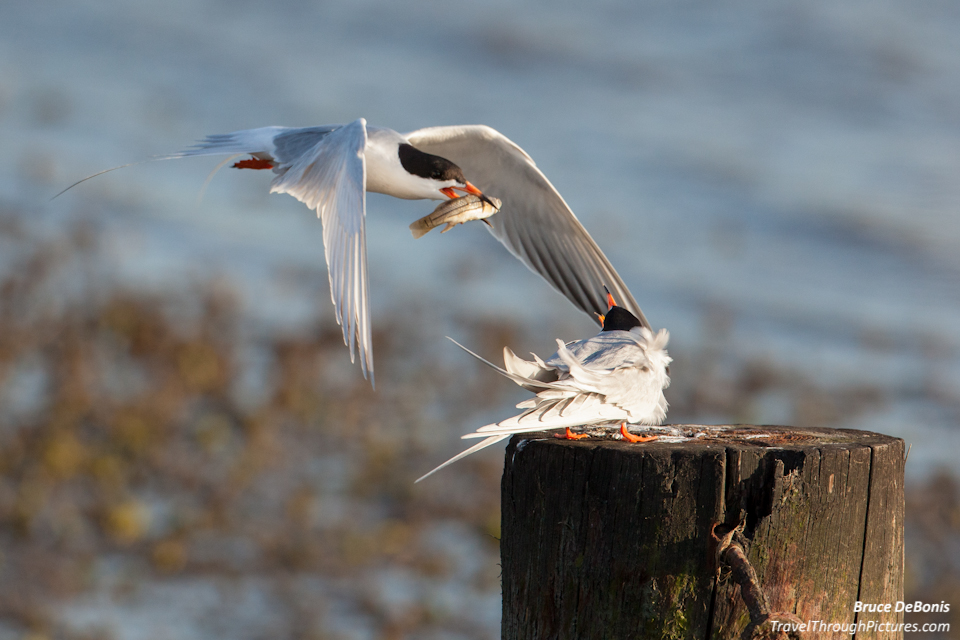


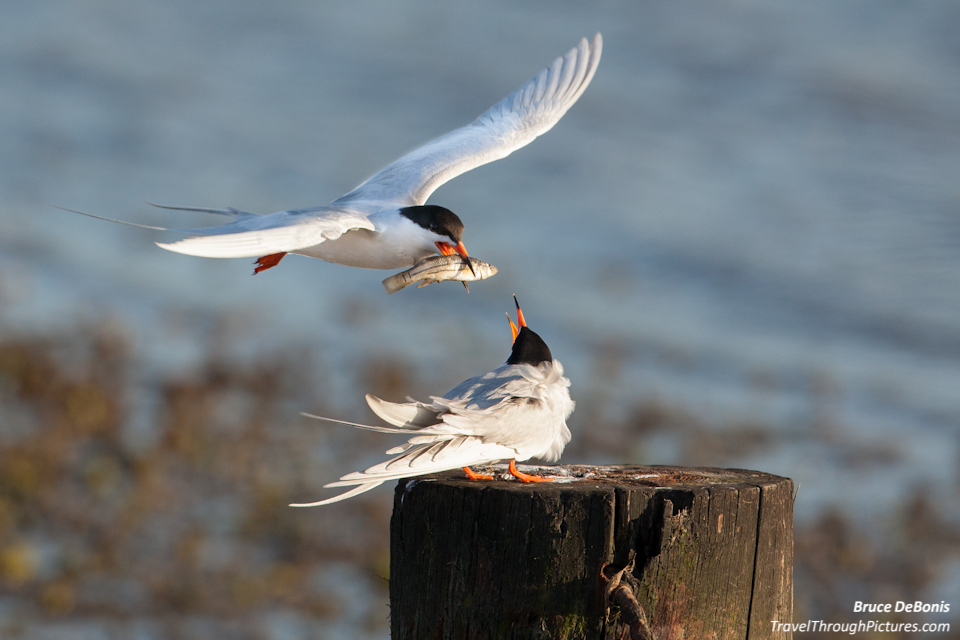

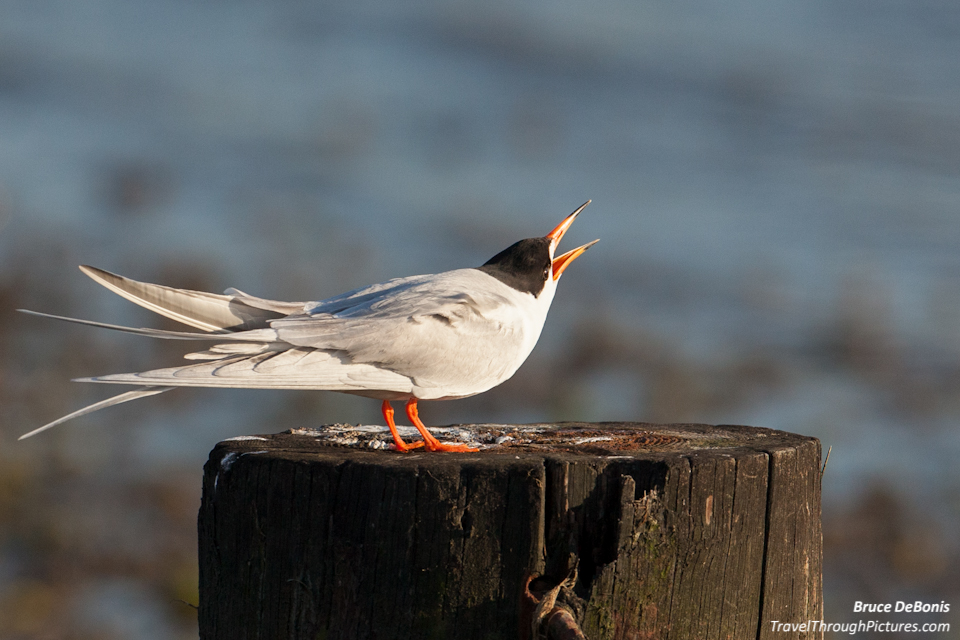
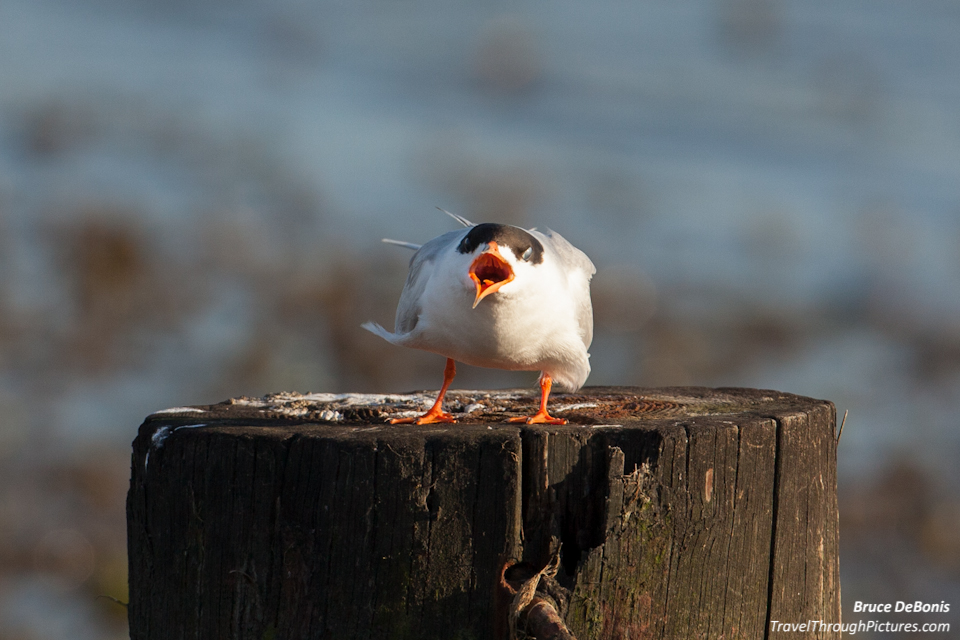
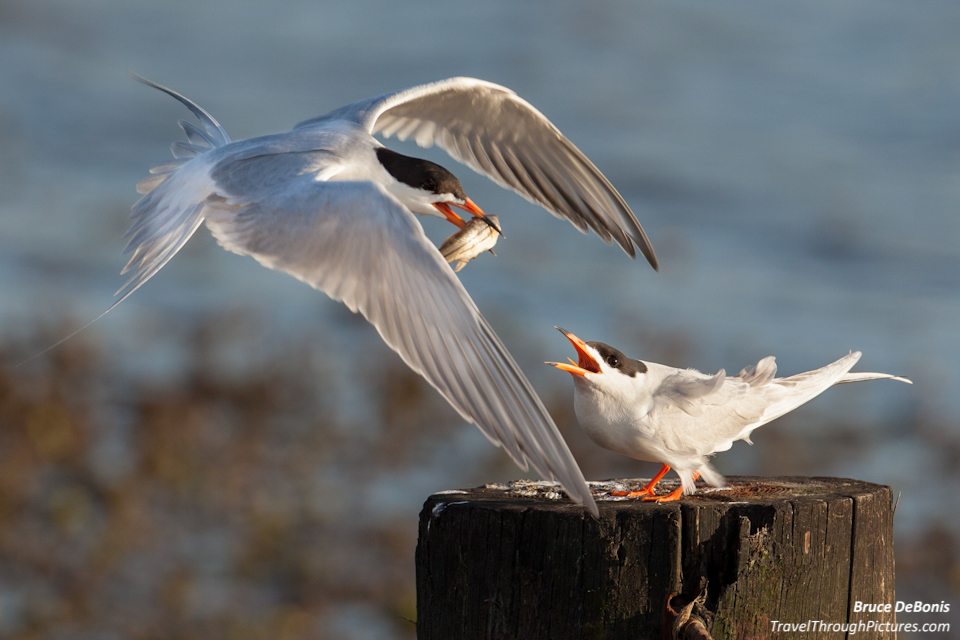
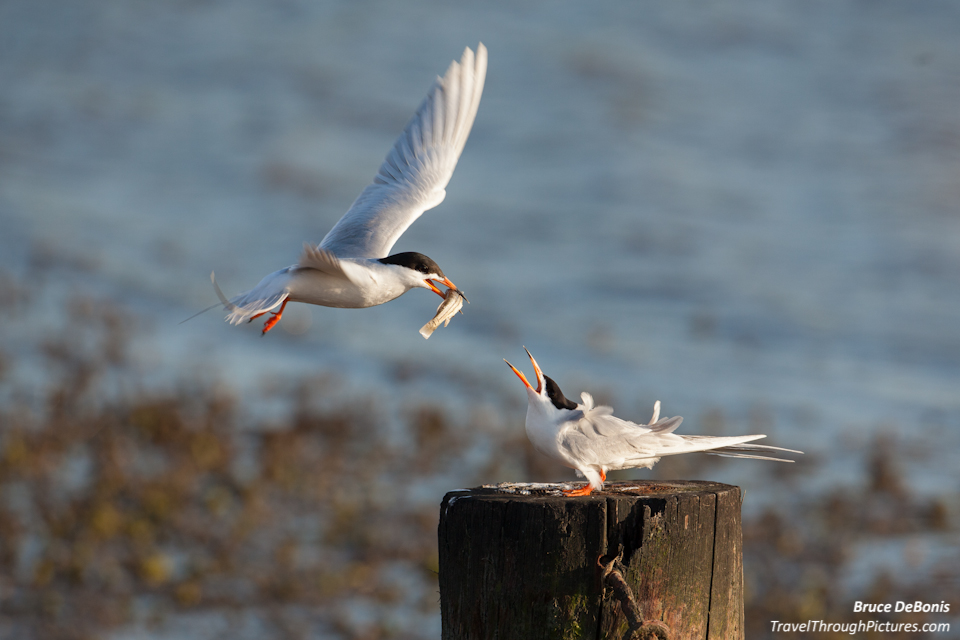

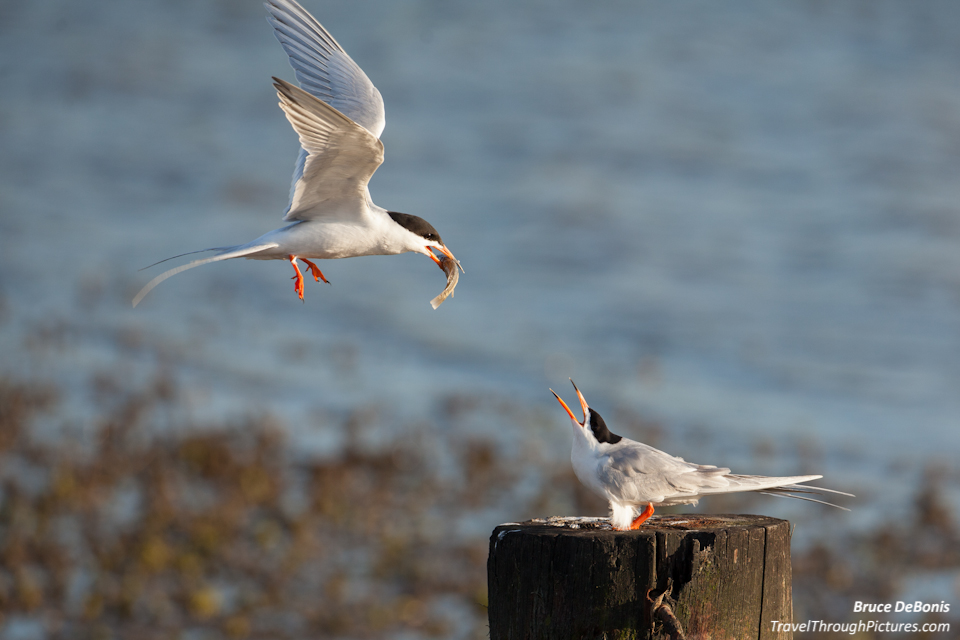

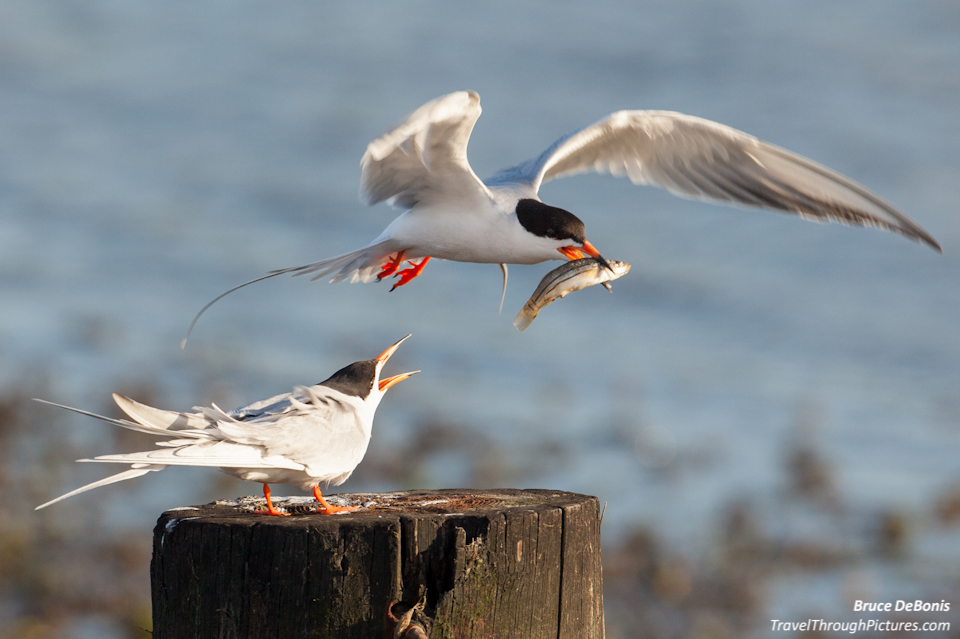
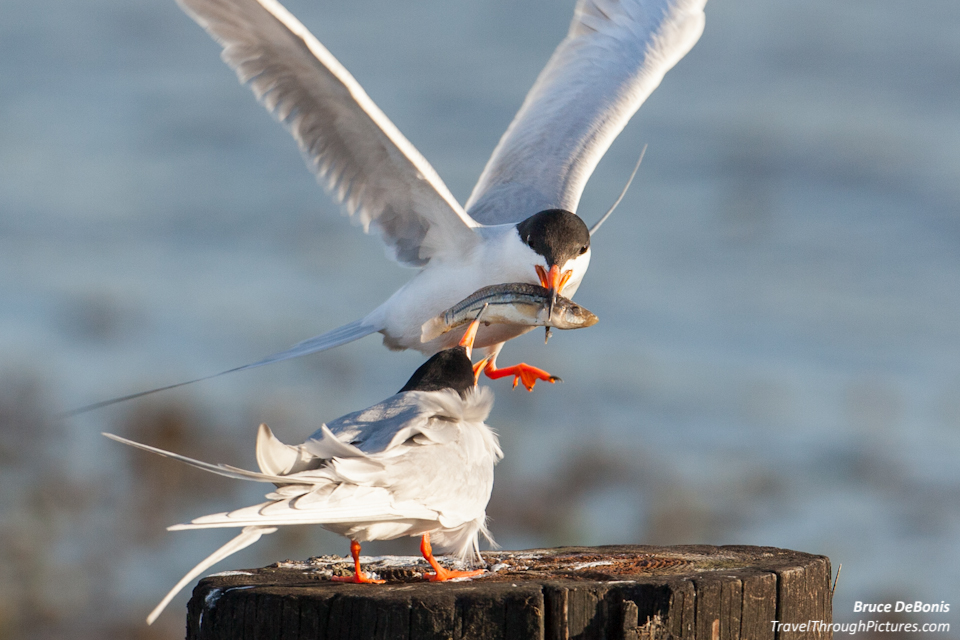
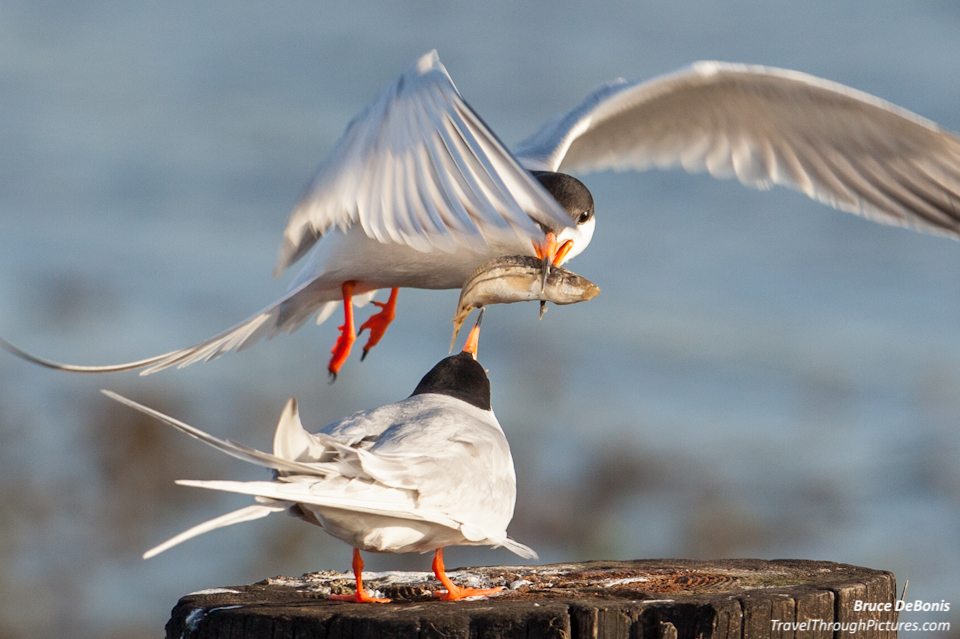
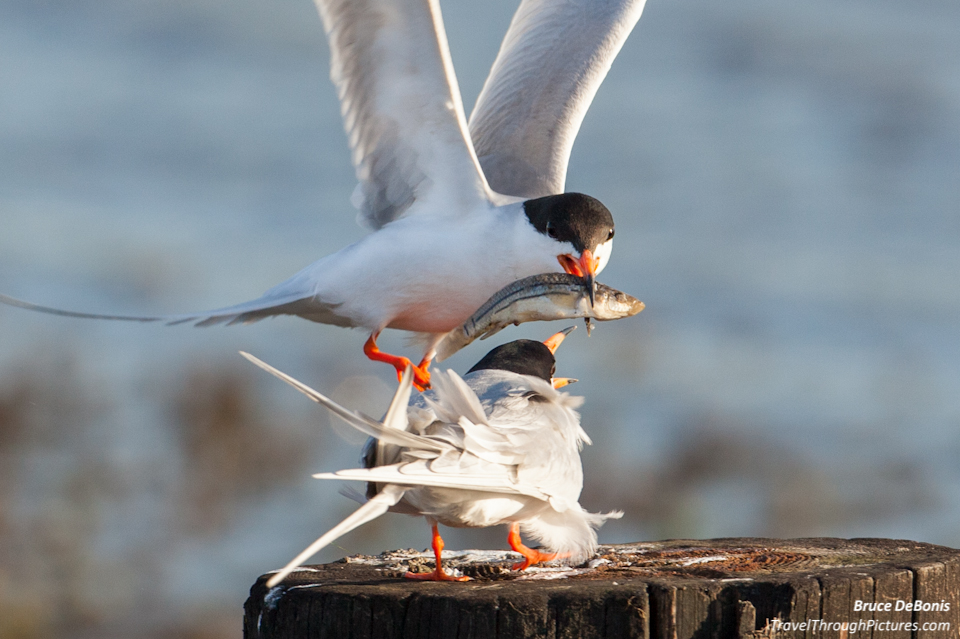
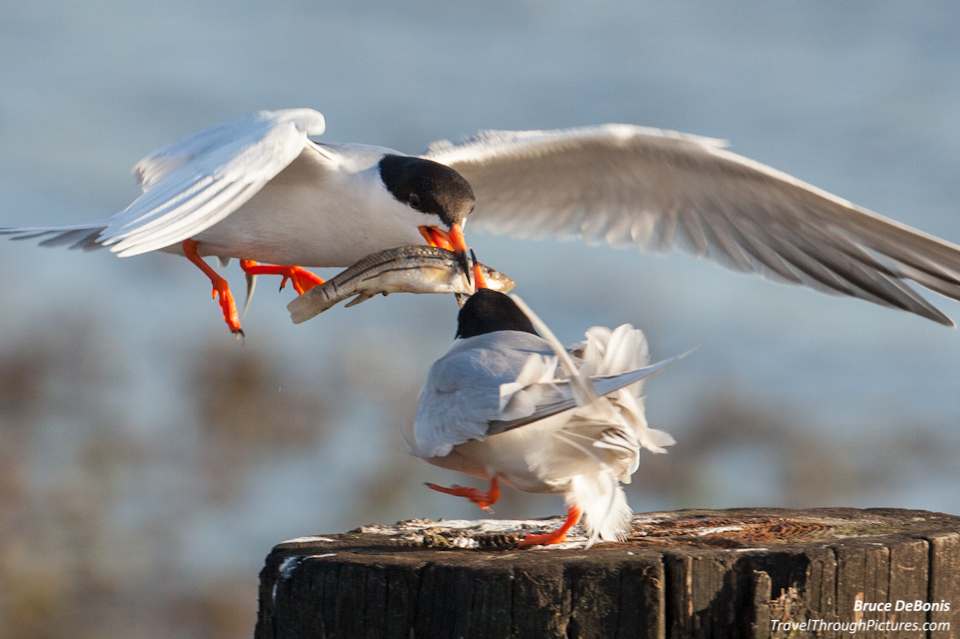
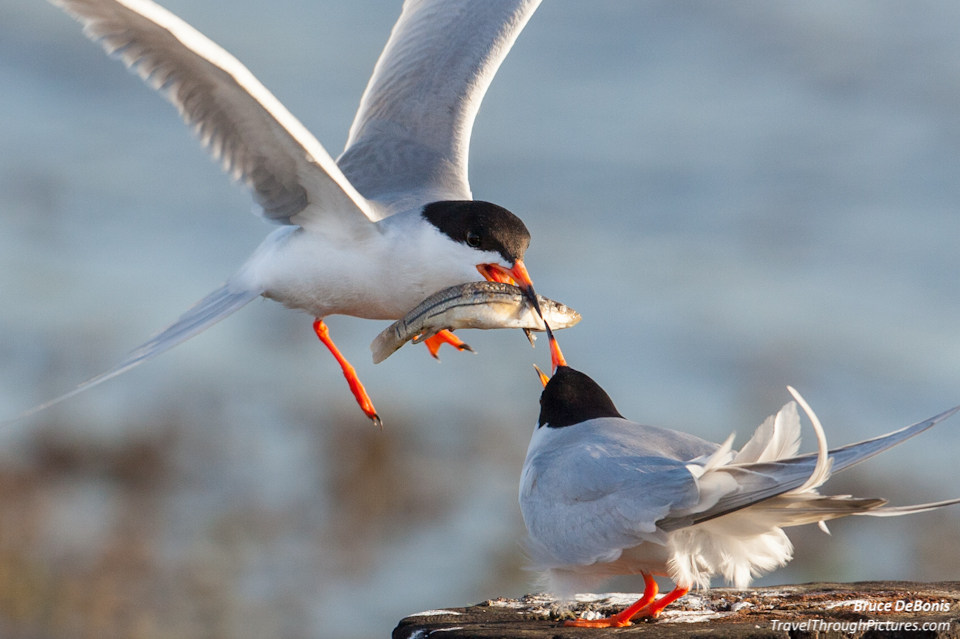
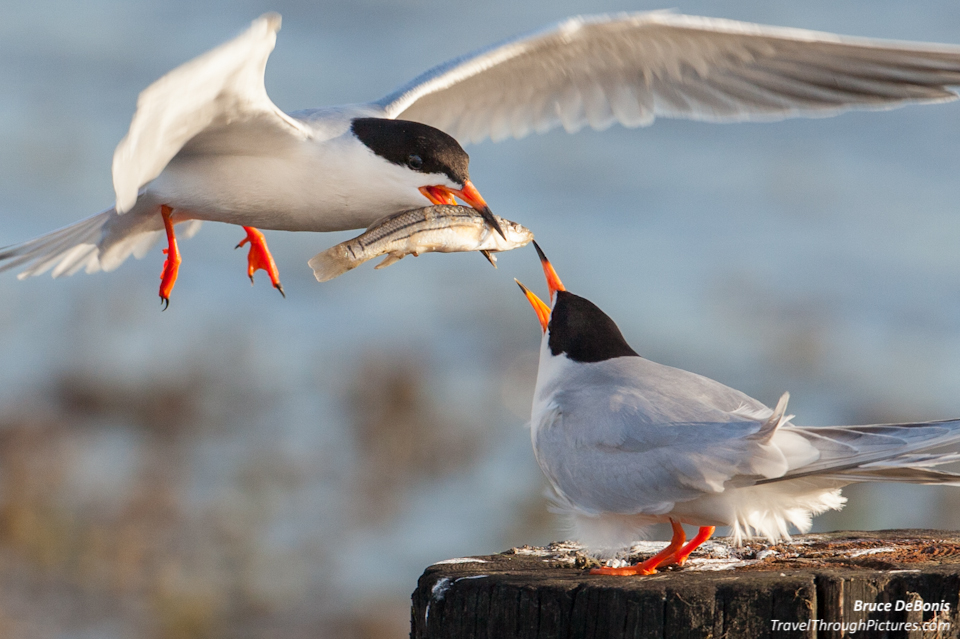

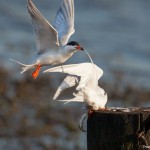
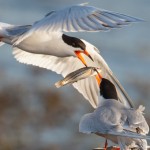
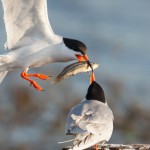
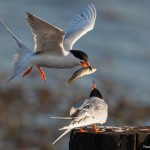
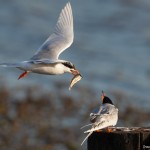
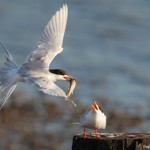
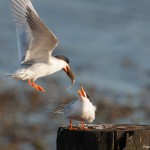
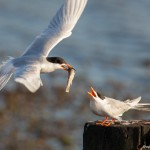
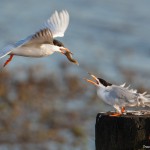
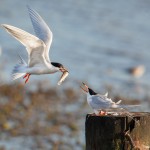
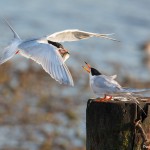

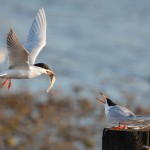
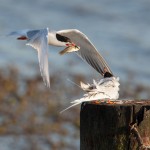
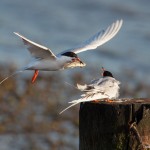
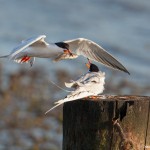
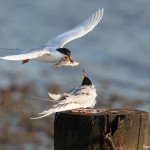
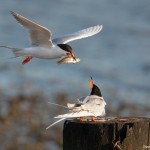
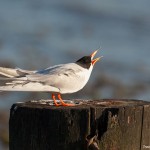
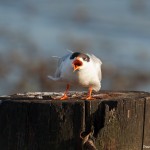
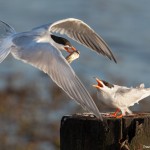
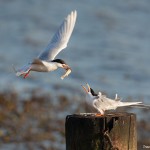
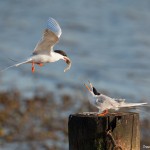
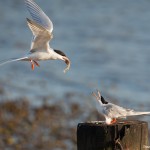
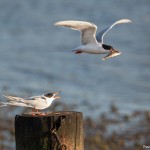
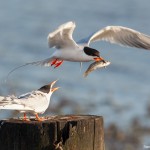
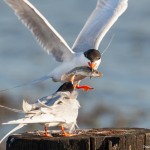
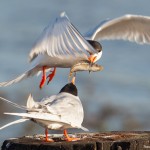
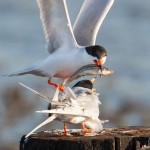
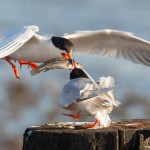
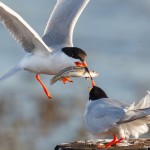
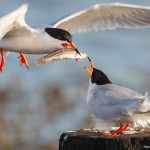
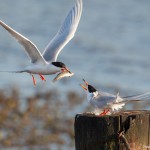
3 Responses to “Terns in Love”